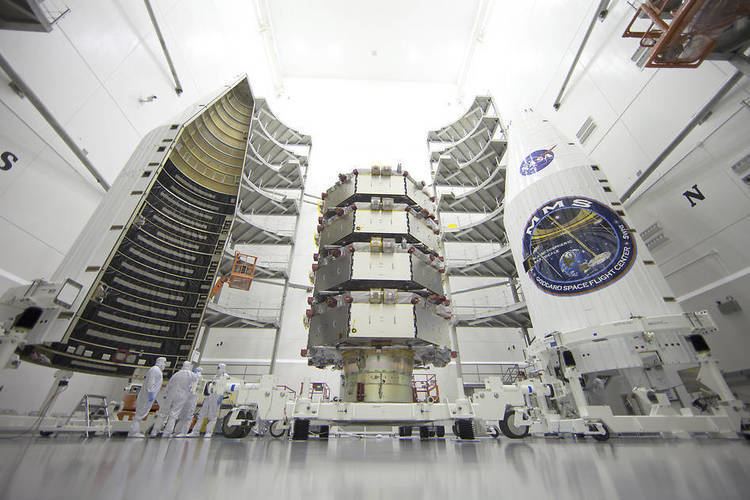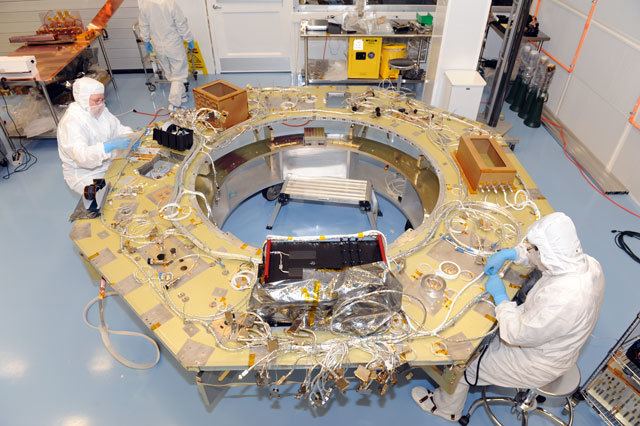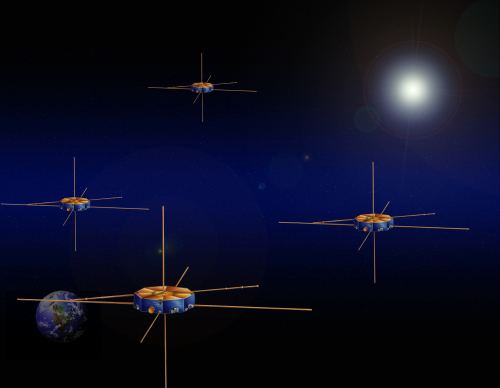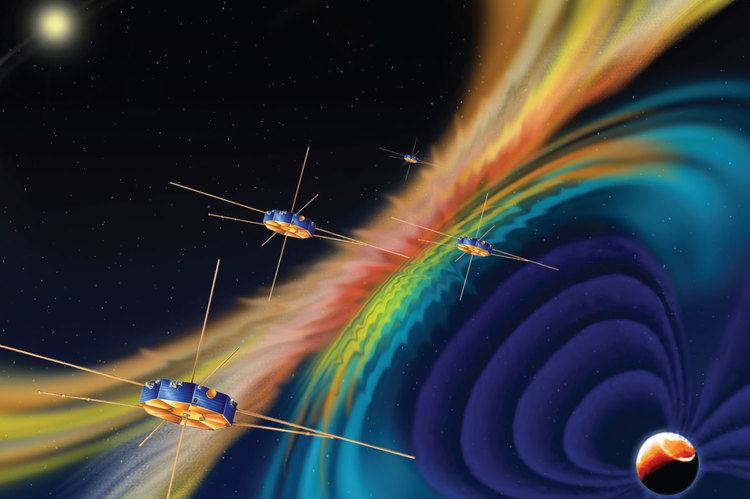Start date March 13, 2015 | Website mms.gsfc.nasa.gov | |
 | ||
COSPAR ID 2015-011A, 2015-011B, 2015-011C, 2015-011D SATCAT no. 40482, 40483, 40484, 40485 Mission duration Planned: 2 years, 5.5 monthsElapsed: 2 years, 4 days Manufacturer | ||
Magnetospheric multiscale mission launches
The Magnetospheric Multiscale Mission (MMS) is a NASA unmanned space mission to study the Earth's magnetosphere, using four identical spacecraft flying in a tetrahedral formation. The spacecraft were launched on 13 March 2015 at 02:44 UTC. It is designed to gather information about the microphysics of magnetic reconnection, energetic particle acceleration, and turbulence, processes that occur in many astrophysical plasmas.
Contents
- Magnetospheric multiscale mission launches
- Nasa s magnetospheric multiscale mission
- Background
- Spacecraft
- Instruments
- Personnel and development
- Formation flying
- Discoveries
- References

Nasa s magnetospheric multiscale mission
Background

The mission builds upon the successes of the ESA Cluster mission, but will surpass it in spatial resolution and in temporal resolution, allowing for the first time measurements of the critical electron diffusion region, the site where magnetic reconnection occurs. Its orbit is optimized to spend extended periods in locations where reconnection is known to occur: at the dayside magnetopause, the place where the pressure from the solar wind and the planets' magnetic field are equal; and in the magnetotail, which is formed by pressure from the solar wind on a planet's magnetosphere and which can extend great distances away from its originating planet.

Magnetic reconnection in Earth's magnetosphere is one of the mechanisms responsible for the aurora, and it is important to the science of controlled nuclear fusion because it is one mechanism preventing magnetic confinement of the fusion fuel. These mechanisms are studied in outer space by the measurement of motions of matter in stellar atmospheres, like that of the Sun. Magnetic reconnection is a phenomenon in which energy may be efficiently transferred from a magnetic field to the motion of charged particles.
Spacecraft

The MMS mission consists of four spacecraft. Each has a launch mass of 1,360 kg (2,998 lb). In their stowed launch configuration, each are approximately 3.4 by 1.2 m (11 by 4 ft), and when stacked together they have a total height of 4.9 m (16 ft). After being deployed in orbit, a total of eight axial and wire booms are deployed, increasing vehicle size to 112 by 29 m (369 by 94 ft).

The MMS spacecraft are spin stabilized, turning at a rate of three revolutions per minute to maintain orientation. Each spacecraft contains 12 thrusters connected to four hydrazine fuel tanks. Position data is provided by highly sensitive GPS equipment, while attitude is maintained by four star trackers, two accelerometers, and two sun sensors.
The mission is broken into three phases. The commissioning phase will last approximately five and a half months after launch, while the science phases will last two years. The first science phase will focus on the magnetic boundary between the Earth and Sun (day side operations) for one and a half years, with the spacecraft formation orbiting the Earth at 2,550 by 70,080 km (1,580 by 43,550 mi). The second science phase will study reconnection in Earth's magnetic tail (night side operations) for half a year, increasing the orbit to 2,550 by 152,900 km (1,580 by 95,010 mi).
Instruments
Each spacecraft carries several experiments, divided into three suites: the Hot Plasma Suite, the Energetic Particles Detector Suite, and the Fields Suite.
The Hot Plasma Suite measures plasma particle counts, directions, and energies during reconnection. It consists of two instruments:
The Energetic Particles Detector Suite detects particles at energies far exceeding those detected by the Hot Plasma Suite. It consists of two instruments:
The Fields Suite measures magnetic and electric field characteristics. It consists of six instruments:
Personnel and development
The principal investigator is James L. Burch of Southwest Research Institute, assisted by an international team of investigators, both instrument leads and theory and modeling experts. The Project Scientist is Thomas E. Moore of Goddard Space Flight Center. Education and public outreach is a key aspect of the mission, with student activities, data sonification, and planetarium shows being developed.
The mission was selected for support by NASA in 2005. System engineering, spacecraft bus design, integration and testing has been performed by Goddard Space Flight Center in Maryland. Instrumentation is being improved, with extensive experience brought in from other projects, such as the IMAGE, Cluster and Cassini missions. In June 2009, MMS was allowed to proceed to Phase C, having passed a Preliminary Design Review. The mission passed its Critical Design Review in September 2010. The spacecraft launched on an Atlas V 421 rocket, in March 2015.
Formation flying
In order to collect the desired science data, the four satellite MMS constellation must maintain a tetrahedral formation through a defined region of interest in a highly elliptical orbit. The formation will be maintained through the use of a high altitude rated GPS receiver, Navigator, to provide orbit knowledge, and regular formation maintenance maneuvers.
Discoveries
In 2016 the MMS mission was the first to directly detect magnetic reconnection (the phenomenon which drives space weather) in the Earth's magnetosphere.
